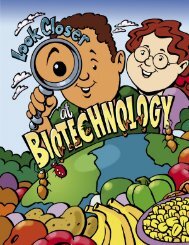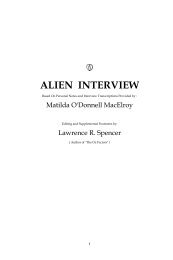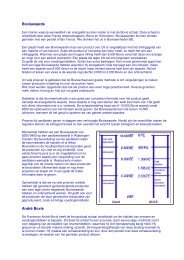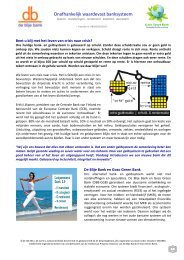De verborgen gevaren van vaccinaties - WantToKnow.nl
De verborgen gevaren van vaccinaties - WantToKnow.nl
De verborgen gevaren van vaccinaties - WantToKnow.nl
Create successful ePaper yourself
Turn your PDF publications into a flip-book with our unique Google optimized e-Paper software.
The report by Rothman and Rothman 13 demonstrates how the vaccine manufacturer<br />
funded educational programs sponsored by professional medical associations in the<br />
United States. The article illustrates how the Society of Gynecologic Oncology, the<br />
American Society for Colposcopy and Cervical Pathology, and American College Health<br />
Association helped market the vaccine and influenced decisions about vaccine policy with<br />
the help of ready-made presentations, slide sets, e-mails, and letters. It is of course<br />
reasonable for professional medical associations to promote medical interventions they<br />
believe in. But did these associations provide members with unbiased educational<br />
material and balanced recommendations? Did they ensure that marketing strategies did<br />
not compromise clinical recommendations? These educational programs strongly<br />
promoting HPV vaccination began in 2006, more than a year before the trials with<br />
clinically important end points were published. How could anyone be so certain about the<br />
effect of the vaccine? This matters because the voices of experts such as the professional<br />
medical associations are especially important with a complex issue such as this.<br />
In another article, Slade and colleagues 14 from the US Centers for Disease Control and<br />
Prevention and the US Food and Drug Administration describe the adverse events that<br />
occurred 2.5 years following the receipt of quadrivalent HPV vaccine that were reported<br />
through the US Vaccine Adverse Events Reporting System (VAERS). Even though most of<br />
the reported adverse events were not serious, there were some reports of<br />
hypersensitivity reactions including anaphylaxis, Guillain-Barré syndrome, transverse<br />
myelitis, pancreatitis, and venous thromboembolic events. VAERS is a passive, voluntary<br />
reporting system, and the authors call attention to its limitations. They point out that o<strong>nl</strong>y<br />
systematic, prospective, controlled studies will be able to distinguish the true harmful<br />
effects of the HPV vaccine. These limitations work both ways: it is also difficult to<br />
conclude that a serious event is not caused by the vaccine.<br />
Whether a risk is worth taking depends not o<strong>nl</strong>y on the absolute risk, but on the<br />
relationship between the potential risk and the potential benefit. If the potential benefits<br />
are substantial, most individuals would be willing to accept the risks. But the net benefit<br />
of the HPV vaccine to a woman is uncertain. Even if persistently infected with HPV, a<br />
woman most likely will not develop cancer if she is regularly screened. 15 So rationally she<br />
should be willing to accept o<strong>nl</strong>y a small risk of harmful effects from the vaccine.<br />
When weighing evidence about risks and benefits, it is also appropriate to ask who takes<br />
the risk, and who gets the benefit. Patients and the public logically expect that o<strong>nl</strong>y<br />
medical and scientific evidence is put on the balance. If other matters weigh in, such as<br />
profit for a company or financial or professional gains for physicians or groups of<br />
physicians, the balance is easily skewed. The balance will also tilt if the adverse events<br />
are not calculated correctly.<br />
AUTHOR INFORMATION<br />
Corresponding Author: Charlotte Haug, MD, PhD, MSc, The Journal of the Norwegian<br />
Medical Association, Akersgata 2, Oslo 0107, Norway (charlotte.haug@legeforeningen.no).<br />
Financial Disclosures: None reported.<br />
Editorials represent the opinions of the authors and JAMA and not those of the American<br />
Medical Association.<br />
Author Affiliation: The Journal of the Norwegian Medical Association, Oslo, Norway.<br />
137







